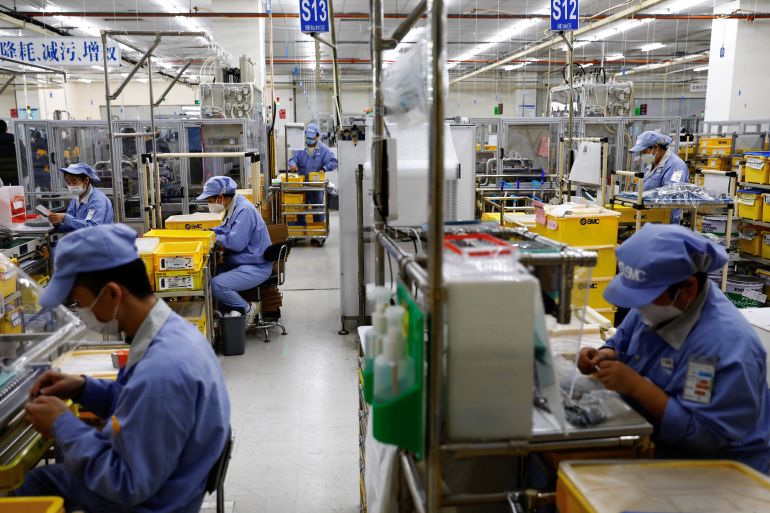China’s factory output smashes forecasts with decade-high growth
Manufacturing Purchasing Managers’ Index hits its highest reading since 2012 following Beijing’s lifting of COVID curbs.

China’s manufacturing activity expanded at the fastest pace in more than a decade in February, an official index showed, smashing expectations as production zoomed after the lifting of COVID-19 restrictions late last year.
The manufacturing Purchasing Managers’ Index (PMI) shot up to 52.6 from 50.1 in January, according to National Bureau of Statistics figures released on Wednesday, above the 50-point mark that separates expansion and contraction in activity. The PMI far exceeded an analyst forecast of 50.5 and was the highest reading since April 2012.
Keep reading
list of 4 itemsJapan’s economy rebounds less than expected amid COVID recovery
Thailand’s economy slows amid declining exports, manufacturing
Russian economy shrank 2.1% in 2022, much less than expected
China, the world’s second-largest economy, recorded one of its worst years in nearly half a century in 2022 due to strict COVID lockdowns and subsequent widespread infections. Beijing abruptly lifted the curbs in December as the highly transmissible Omicron variant spread across the country.
Global markets cheered the big surprise in the PMI, with Asian stocks and the Australian dollar reversing earlier losses, the offshore yuan perking up and oil rallying, as investors took a more optimistic view of China’s economic prospects.
“While we need to treat these numbers with caution as there might be significant seasonal and event factors, the overall trend still points to a solid recovery at the beginning of 2023,” said Zhou Hao, an economist at Guotai Junan International.
Markets expect the annual meeting of China’s parliament, which kicks off this weekend, will set economic targets and elect new top economic officials.
“The decent PMI readings provide a positive note for the upcoming National People’s Congress. We expect the government to roll out further supportive policies to cement the economic recovery,” said Zhou.
The official PMI came out just before an upbeat private sector index from Caixin/S&P that showed activity rising for the first time in seven months.
Businesses accelerated their resumption of work and production, as the effect of economic stabilisation policies was felt by the sector, while the impact of COVID-19 receded, the NBS said in a separate statement.
While the manufacturing sector has started to see more signs of recovery, it had remained under pressure with factory-gate prices falling in January due to still cautious domestic consumption and uncertain foreign demand.
The official non-manufacturing PMI rose to 56.3 from 54.4 in January, indicating the fastest pace of expansion since March 2021.
On Friday, China’s central bank said the domestic economy was expected to generally rebound in 2023, although the external environment remained “severe and complex”.
The composite PMI, which includes both manufacturing and non-manufacturing activity, rose to 56.4 from 52.9.